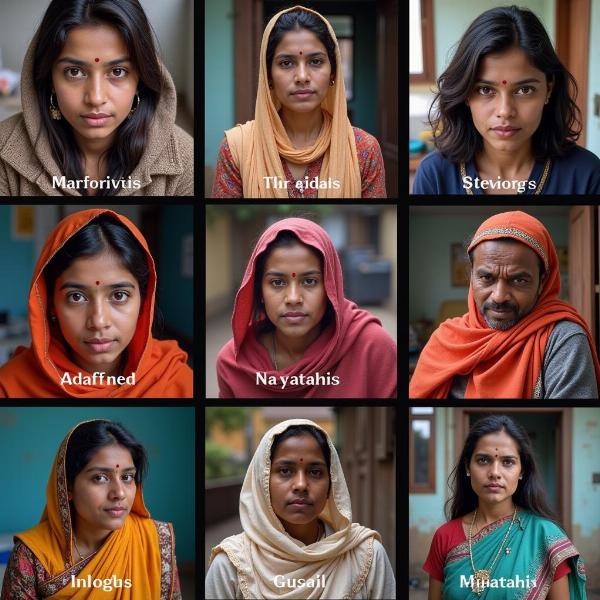Marginalisation, a complex concept often discussed in social and political contexts, can be challenging to grasp fully. Understanding its meaning in Hindi, especially within the nuances of Indian culture, is crucial for effective communication and engagement. This article explores the various dimensions of “marginalise meaning in Hindi,” offering insights into its linguistic, cultural, and societal implications. We’ll delve into common translations, synonyms, and related terms to provide a comprehensive understanding of this important concept.
What Does “Marginalise” Mean in Hindi?
Several Hindi words capture the essence of “marginalise,” each with its own subtle connotations. Common translations include हाशिये पर धकेलना (hāshiye par dhakelnā) – literally meaning “to push to the margins,” उपेक्षित करना (upekshit karnā) meaning “to neglect,” and अलग-थलग करना (alag-thalag karnā) which translates to “to isolate.” The specific word choice depends on the context and the degree of exclusion being conveyed. For instance, neglecting someone’s opinion might be उपेक्षा (upekshā), while systematically excluding a community could be हाशियाकरण (hāshiyakaraṇ).
 Marginalisation in India: Depicting social exclusion
Marginalisation in India: Depicting social exclusion
The Cultural Context of Marginalisation in India
India’s diverse social fabric, with its complex caste system, religious pluralism, and economic disparities, presents a unique context for understanding marginalisation. Historical and societal factors have contributed to the marginalisation of certain groups, including Dalits, Adivasis, women, and religious minorities. This exclusion manifests in various forms, from limited access to resources and opportunities to social discrimination and violence.
Examples of Marginalisation in Indian Society
Marginalisation takes on different forms depending on the specific group affected. For example, हाशियाकरण (hāshiyakaraṇ) of women might involve restricting their access to education and employment. Dalits, historically subjected to untouchability, continue to face discrimination in various spheres of life. Adivasi communities are often displaced from their ancestral lands and denied their traditional rights.
How Does Marginalisation Affect Individuals and Communities?
The consequences of marginalisation are far-reaching, impacting individuals and communities on multiple levels. Economic hardship, social stigma, and psychological trauma are some of the common outcomes. Marginalised communities often lack access to quality education, healthcare, and other essential services, perpetuating a cycle of poverty and disadvantage.
Addressing Marginalisation: The Role of Inclusion
Combating marginalisation requires proactive efforts to promote inclusion and empower marginalised groups. This includes policy interventions, social awareness campaigns, and community-based initiatives. Education plays a vital role in challenging discriminatory attitudes and fostering a culture of respect and equality.
What are the Long-Term Effects of Marginalisation?
The long-term effects of marginalisation can be devastating, leading to intergenerational poverty, social unrest, and even violence. Addressing the root causes of marginalisation is essential for building a just and equitable society.
Conclusion
Understanding “marginalise meaning in Hindi” requires appreciating the various nuances of the term and its cultural significance within Indian society. By recognizing the different forms of marginalisation and its impact on individuals and communities, we can work towards creating a more inclusive and equitable society for all.
FAQ
- What is the most common Hindi word for “marginalise”? हाशिये पर धकेलना (hāshiye par dhakelnā) is commonly used, but other words like उपेक्षित करना (upekshit karnā) and अलग-थलग करना (alag-thalag karnā) can also convey the meaning depending on the context.
- How does caste contribute to marginalisation in India? The caste system historically created a hierarchy of social groups, leading to the marginalisation of lower-caste communities through discrimination and limited opportunities.
- What are some examples of marginalized groups in India? Dalits, Adivasis, women, religious minorities, and people with disabilities are some examples of marginalised groups in India.
- What are the consequences of marginalisation? Marginalisation can lead to poverty, social exclusion, psychological trauma, and limited access to resources and opportunities.
- How can we address marginalisation? Promoting inclusive policies, raising social awareness, and empowering marginalised communities through education and economic opportunities are crucial steps.
- What is the meaning of हाशियाकरण (hāshiyakaraṇ)? It specifically refers to the process of marginalisation.
- Is उपेक्षा (upekshā) a suitable translation for “marginalise”? It can be, particularly when referring to the neglect or disregard of someone or something.
Meaning-Hindi.in specializes in accurate and culturally sensitive Hindi translations across various domains, from business and legal documents to technical manuals and website localization. Our team of expert linguists ensures your message resonates effectively with your target audience. Whether you need business document translation, certified legal translation, technical translation, website localization, or educational material translation, our rapid and specialized services cater to your diverse needs. Contact us today for a seamless translation experience. Email: [email protected], Phone: +91 11-4502-7584. Meaning-Hindi.in is your trusted partner for all your Hindi translation requirements.